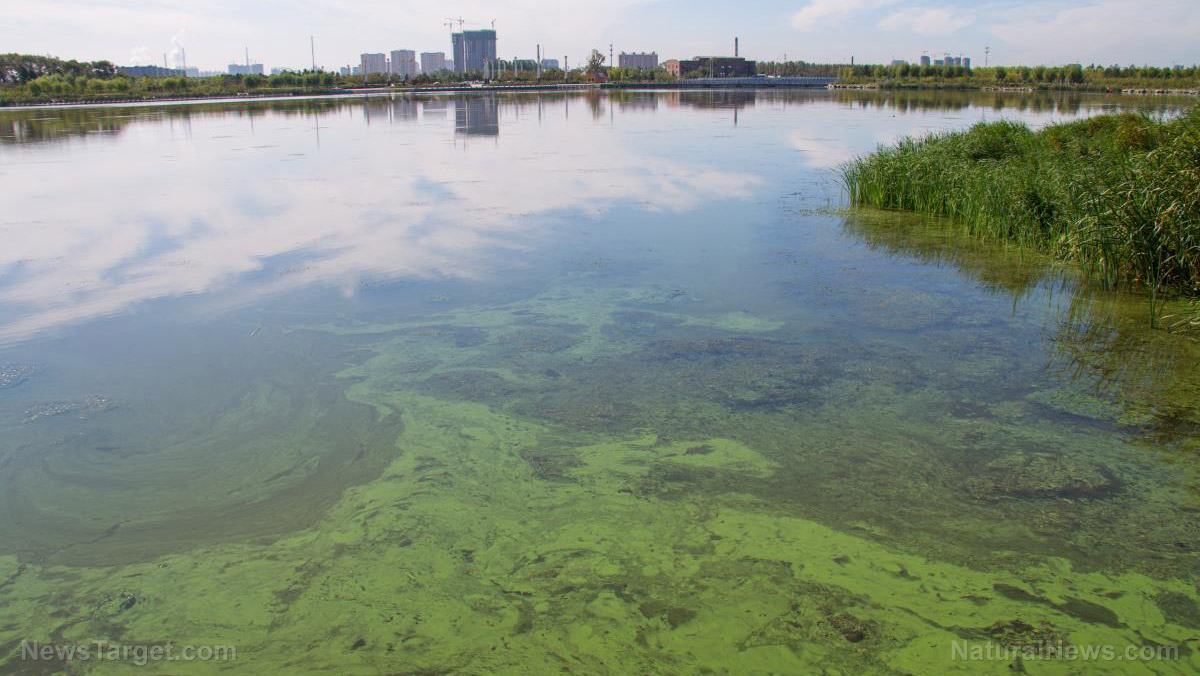
Experts are warning Americans to watch out for toxic algal blooms as they head out to beaches for the upcoming Labor Day weekend.
The Environment Working Group (EWG) identified 318 individual bodies of water all over the United States that are populated by toxic amounts of cyanobacteria, a type of algae that can produce toxins. The majority of the outbreaks are concentrated in recreational areas. In other locations, dogs and cattle died after being exposed to the toxic blooms.
Fewer outbreaks of algal blooms were reported this year compared to 2019. However, the EWG noted that this might not reflect the actual number of outbreaks in the nation, as there are fewer inspections by wildlife officials as a result of the coronavirus pandemic.
Algal blooms, which often look like luminescent undersea outgrowths, can grow out of control and lead to red tide, a type of harmful algal bloom that can cause water to change color. Red tide is destructive to the environment and human health.
Fewer reports don't imply fewer algal blooms
Reports of algal blooms have increased in the past 10 years, as no more than 100 blooms were reported in 2010. Anne Schechinger, a senior economic analyst at EWG, thinks that climate change is one of the major factors driving their increase.
"Algae blooms flourish and occur more frequently when nutrients like phosphorous and nitrogen wash into water bodies and combine with heat and sunlight," said Schechinger.
In 2019, authorities recorded 419 algal blooms in the United States. That's 98 more than this year's record by the EWG. According to the organization, which has been tracking outbreaks of algal blooms for more than a decade, reports are down this year due to budget cutbacks in various states in response to the coronavirus pandemic. The Utah Department of Environmental Quality tested 60 rivers and lakes in previous years but was only able to test 18 areas in 2020.
‘Those 18 are largely state parks," department director Erica Gaddis stated. ‘They’re really the areas where the public is most likely to interact directly with the water body, and where we’ve had issues of algal blooms in the past.’
In this year's report, about 86 percent of the areas hit by algal blooms are for recreational use. Authorities have also reported that seven dogs and nine heads of cattle died in eight other locations due to exposure to the harmful blooms.
The EWG warns Americans planning to go to beaches to watch out for the blooms, as high doses of the toxins released in algal blooms were previously linked to liver damage.
Global increase in harmful algal bloom
Experts forecast that there will be a global increase in harmful algal bloom this 2020. That's due to the warmer temperatures recorded this year, which are the highest since 2016, according to statistics provided by the National Oceanic and Atmospheric Administration (NOAA). Cyanobacteria thrive in warm waters, foreboding worse algal blooms for the rest of the year.
"The proliferation of blue-green algae has become a serious problem for global water security," said Dave Shackleton, CEO of the SIS.bio, a biotechnology solutions provider that specializes in water quality management.
He noted that agricultural runoff and wastewater, together with warmer weather, is creating the ideal environment for cyanobacteria to flourish. The algal blooms produce toxins such as microcystin, the most common type of cyanotoxin. Research shows that exposure to unsafe levels of microcystin can lead to a wide range of symptoms, including fever, vomiting and headache. In worse cases, microcystin exposure can lead to kidney and liver damage.
There are procedures to lessen cyanobacteria in water systems. However, standard approaches such as the use of algaecides were proven to exacerbate the situation, as the dead algae decompose and provide the nutrients that fuel the growth of cyanobacteria.
Shackleton recommends an integrated solution to algal blooms, one that considers when and what plants and animals are consuming marine nutrients. This way, authorities can reduce harmful microorganisms while preserving marine biodiversity. (Related: Toxic algal blooms can be easily eliminated by adding hydrogen peroxide to ocean water.)
Ecology.news has more on the impact of algal blooms on the environment and human health.
Sources include:
Please contact us for more information.



















